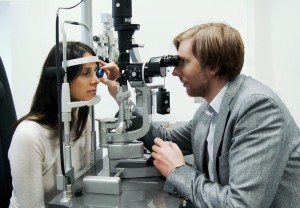
Ophthalmology is a medical branch that concerns the anatomy, physiology and pathology of the eye. It extends to the study of animal eyes because they are all very similar. An ophthalmologist is a medical practitioner who specializes in ophthalmology. It is a specialist field that encompasses everything from minor treatments to surgical procedures meant to correct the eye. Before the first school for ophthalmologists was formed in London, eye doctors were known as oculists. The etymology for the new term is Greek meaning the study of eyes.
The history of ophthalmology can be traced back to 800BC in ancient India. More than 76 ocular diseases were already known at the time and 51 surgical procedures were documented.Conditions such as cataracts were first treated in India. The Greeks, Romans and Middle Eastern cultures also documented eye procedures in ancient times.
Many instruments were used by the early ophthalmologists and they had to be precision tools. It is also speculated that ancient Peruvians did surgical eye procedures with punishment meted out to any surgeon who dented the eye. The punishment was that the surgeon would also have to lose his eye. The modern understanding of the eye’s anatomy first came into existence through Rufus of Ephesus and was refined by Vesalius.
To qualify as an ophthalmologist, one must hold a degree in the field and have specialized training after that. The number of years spent for the degree and specialization varies from country to country. It may take up to 5 years of specialization. There are many specialties and sub-specialties in ophthalmology. A board then certifies the ophthalmologist.
Optometricians and opticians refer the ophthalmologist with initial diagnosis of the pathos of a patient’s eye. Other non-pathological problems of the eye may be resolved without ever consulting an ophthalmologist. Fitting of lenses is one example. It is however advisable to see an ophthalmologist for any problems of the eye in order to find the root cause and to avoid deterioration. He/she has the skill to determine if an eye disorder is caused by another disease in the body or as a side effect to medication.
Ophthalmology has brought many advances to modern living bringing to light how the eye works and hence how to protect it. It has improved medicine as a whole and influenced other industries including the entertainment and sports industries. Science can now create artificial eyes and color perception thanks to the wealth of knowledge from this field. Surgical procedures have made it possible to reverse cataracts, conjunctivitis, broken lenses and so forth.
The latest procedures for eye treatment are less invasive and more effective. Lasic surgery and eye transplants are the most exemplary. The importance of the procedures to the patient ranges from; restoring of sight to simple eye cleaning.These advances allow patients to keep working, driving and conduct their daily activities even though they do not have 20-20 vision. Treatment of animals gives them a better quality of life and a longer lifespan. Research now addresses 3D imaging of the eye and the treatment of tumors.
Author Bio: Tony Rollan is working with VSI company (http://www.patternless.com/) and he is an author of many articles on health, ophthalmology, and optical equipment.
